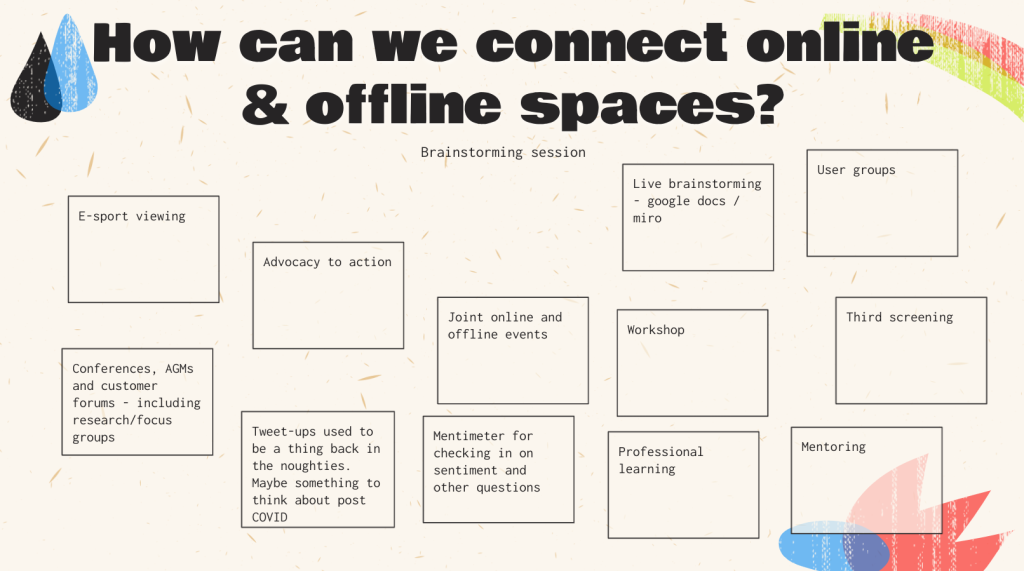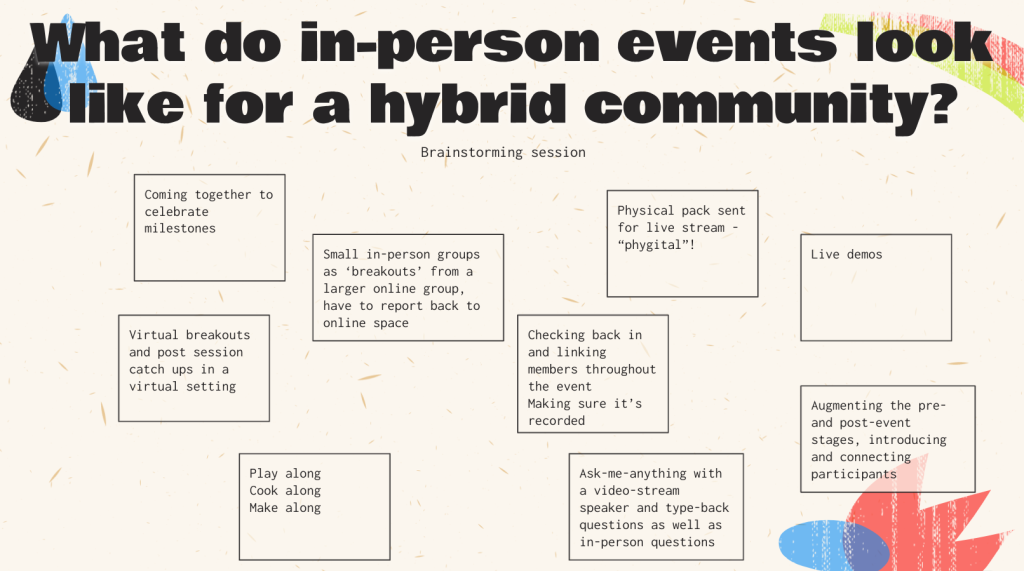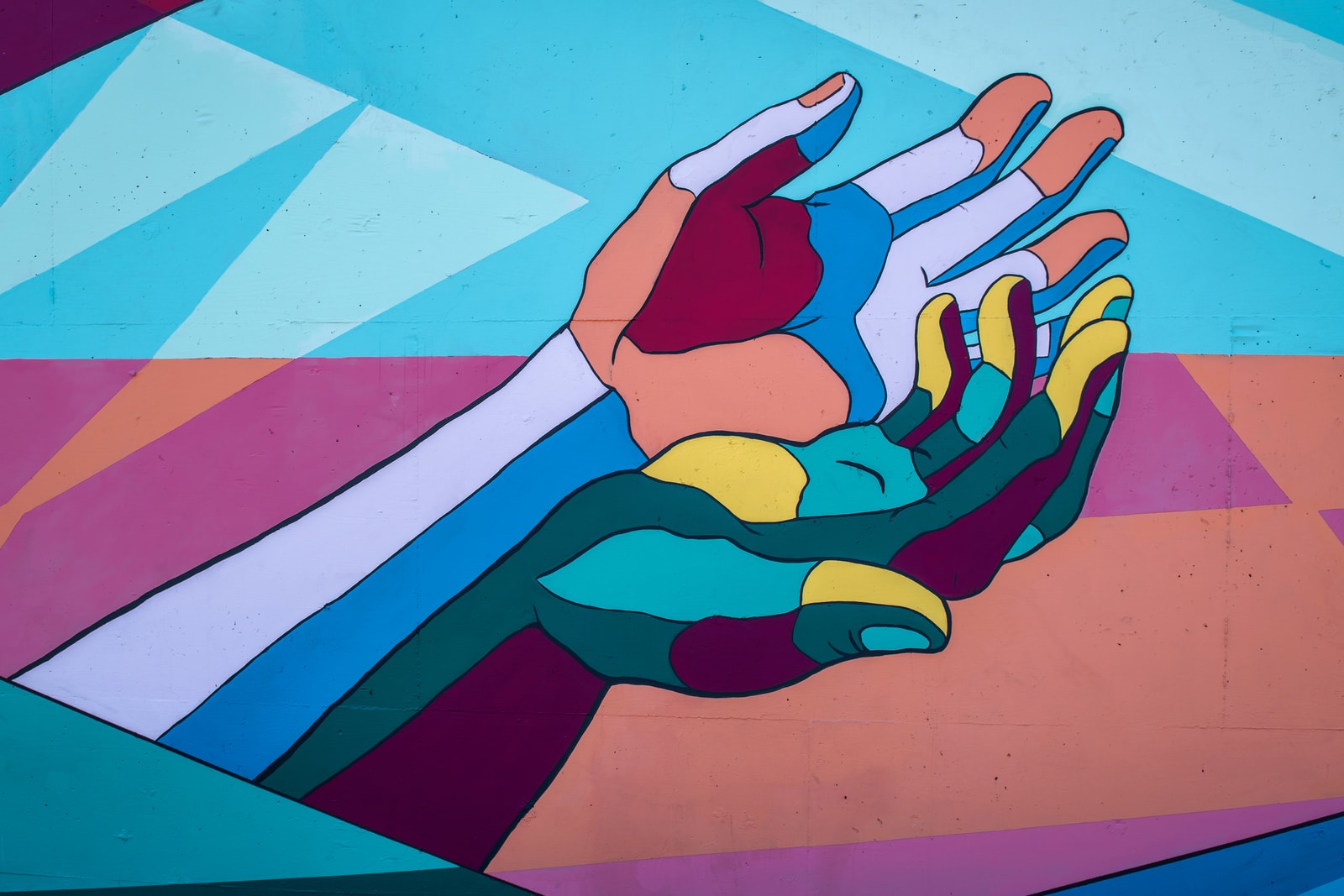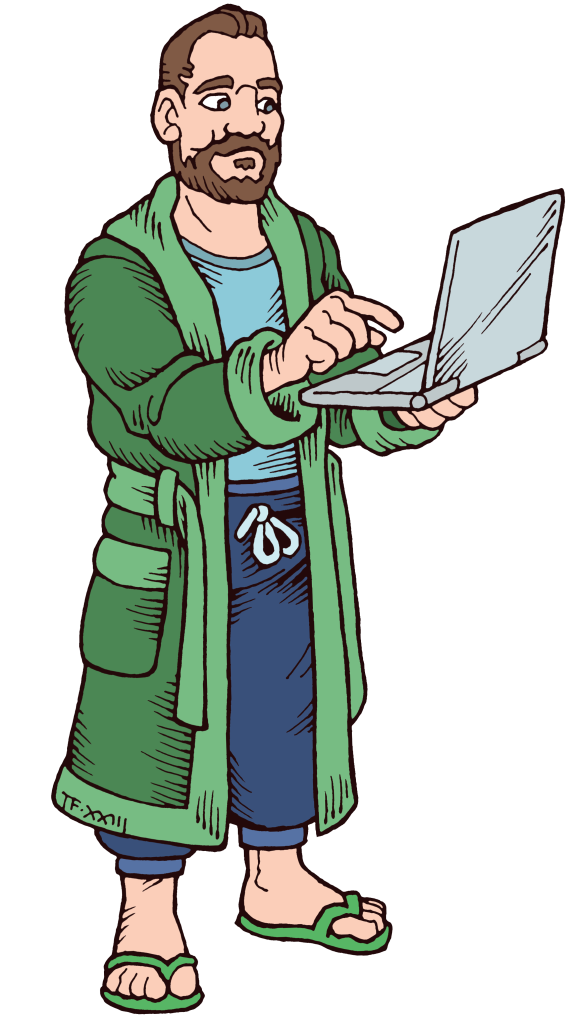This week I spoke at the 10th anniversary of Swarm – an APAC-focused conference organised by Australian Community Managers. This was my first time attending the event and I loved it! I had the privilege of speaking alongside people who have been in this industry for a lot longer than I have, and even some whose books I’ve read. In fact, if you’re reading this post on the day I published it then the event is still ongoing and you can register now!
My talk was on creating equitable, hybrid communities – that is hybrid online/offline communities that go beyond just events. I thought I would give a summary of my talk here along with the slide deck, so let’s jump into it.
First up, here are my slides from the talk. Since this was a live talk (which is always so much more fun than pre-recorded) I was able to build some interactivity into things and there are three times when myself and everyone attending did some collaborative brainstorming together. I have included the results of those sessions in their context in the slide deck.
What is a “Hybrid Community”
By this stage, we’ve probably all heard of “hybrid events” – it’s become a bit of a buzzword in the community industry of late – so how do hybrid communities differ from events? There’s a lot of nuance to it, but broadly speaking hybrid communities have a more holistic focus as they incorporate all interactions of the community, not just the singular events. I spoke about this in a post from December 2020 (a little over 9 months ago at the time of writing this).
A hybrid community facilitates valuable online connections strengthened by in-person interactions.
Tweet
As something of a summary, a hybrid community facilitates valuable online connections strengthened by in-person interactions. The impetus is on the connections formed rather than the format of the interactions themselves. This places significantly more emphasis on the quality of relationships rather than how people meet or where they connect.
How can we connect online & offline spaces?
At this stage, we did some brainstorming of ideas about how we can connect online and offline spaces in real and authentic ways – here’s what we put together:

There are some great thoughts there and I loved working through that with everyone!
One of the things that hybrid communities are much more well-suited towards is creating spaces that promote inclusion and equity in real, tangible ways. With the emphasis on creating connections and using in-person events as a vehicle to strengthen those connections, barriers are reduced for people from under-represented groups to become more deeply involved.
So…let’s look at some ways we can create more equitable environments.
Creating Equity
There are three focus areas here – if you keep them all in mind and really put in the work to get them right then you’ll find you’re well on the way to fostering a community that actively encourages all people to join.
Tools
In this context, I’m using “tools” to refer to the platforms and software you use for your community to connect. While I would always favour open-source options over others (you can read my post on how to build a robust community platform on WordPress), I don’t want to be prescriptive here. What I will say is that you need to be providing accessible platforms for collaboration and connection. Here are some considerations to keep in mind when selecting your community platform(s):
- Live interactions
- Asynchronous conversations
- Accessibility
- Localisation
- Multimedia
- Documentation
- Open-source licencing
Training
Community education has become quite a hot topic of late – I’ve seen a bunch of communities focus on providing structured training for their community members, and I couldn’t be more excited about it. My work focus right now is building a learning platform for the WordPress community, so this is something that’s really top of mind for me and I can really feel and see the intense urgency of this kind of work.
Learning together creates a sense of community that is incredibly tough to match in any other way. I would go so far as to say that being part of a learning cohort, even remotely, binds people together more than any regular in-person event can. In addition to that deeper sense of community that is created, remote learning gives more people the chance to join in, which allows for greater diversity amongst participants and allows all community members to upskill in the same way and at the same time.
As a community builder, your job here is to create practical content that teaches your community new skills.
Teamwork
Working with your community and recruiting a team of people who can work alongside you is of inestimable value.
Tweet
Building tools and creating relevant training for your community is all well and good (definitely good), but if you’re doing it on your own and not collaborating with your community itself then you’re missing a key ingredient. Working with your community and recruiting a team of people who can work alongside you is of inestimable value.
This needs to be done with care and must include documentation, onboarding, defined tasks, appropriate access levels, and any other consideration that allows you to effectively share the keys to your community with other people. It’s a fair bit of work to implement effectively, but I can promise that you’ll never regret it. You need to collaborate with your community to facilitate interactions.
What do in-person events look like for a hybrid community?
So we’ve spoken a lot about what a hybrid community is and how you can build equality into your community model, but we haven’t really touched on the other aspect of hybrid communities – in-person events. What do in-person events look like for a hybrid community? Well at this stage in the session we had another brainstorming session that I really enjoyed:

There were some great ideas in there.
To speak more broadly, my idea of how in-person events will work for hybrid communities is that they will involve collaborative discussions that flow from online interactions. This highlights the emphasis on authentic relationships regardless of how people connect.
How can existing communities adopt a hybrid model?
Many communities are already 100% focused on either in-person or virtual connections. There’s nothing wrong with that of course, but what if they wanted to evolve into a hybrid model? What processes do they need to put in place to make that a realistic possibility?
We jumped into another brainstorming session for this:

The Three S’s of Creating Community Connections
At this stage, I took a dive into what I call the Three S’s of creating community connections. I recently posted about this on my blog, so rather than copy/paste from there I’m going to link out to it:
In Summary…
I took a while to come up with a statement that effectively summarises my talk in a neat yet complete way. I always love it when talks end with something like that, as it gives you an immediate takeaway that you can hopefully implement right away. So, in summary:
To grow an equitable, hybrid community, you must use accessible tools to collaborate with your community, providing relevant training that meets their needs on a platform that enables authentic connections to inform in-person interactions.
Thanks to everyone who tuned in live and engaged in the brainstorming sessions – that was a ton of fun and it was great to work alongside you!





Leave a Reply